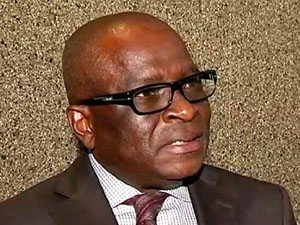
[miningmx.com] – NGOAKO Ramatlhodi took over the job as mines minister from Susan Shabangu in May where he enthusiastically, heroically stepped into the five-month long platinum strike to try to end hostilities. “I am focused on the strike. It’s my breakfast, lunch and supper,” he said at the time.
It took just two weeks for him to throw in the towel. “The minister . believes since his establishment of the task team a fortnight ago a lot of ground has been covered,’ Mineral Resources spokesperson Mahlodi Muofhe told the media.
It evidently wasn’t enough ground though: the 70,000 AMCU [Association of Mineworkers & Construction Union] members who had downed tools in January at Impala Platinum (Implats), Anglo American Platinum (Amplats) and Lonmin, cutting 40% of global production of the precious metal, kept on striking.
But the possibility couldn’t be ruled out that Ramathlodi had had his nascent wings clipped by the South African government for being soft on AMCU.
After all he had said on radio that the government should “… treat AMCU with respect’ and “… give them the dignity due to any trade union’.
Worse, AMCU president, Joseph Mathunjwa, liked him and said he was “pleased’ with the progress of the talks. It was a massive departure for the union who were more prone to cursing government ministers for their heavy-handed efforts to try to restart production.
Shabangu had never hidden her deep disdain for the union. She was accused by Mathunjwa of encouraging the mines to sue the union for the hundreds of millions of rands worth of damages.
The spectre of the party line and Ramathlodi’s inability to cross it is the reason many pundits believe he is essentially hamstrung in making any big, bold decisions.
Daniel Silke, independent political analyst, said: “From a political point of view, does it really matter who he is?’
Silke said the increasingly fragmented and populist trade union movements like AMCU were forcing government in the role of referee rather than policy maker.
Peter Major, head of the mining & resources division at Cadiz Corporate Solutions, said in Ramatlhodi’s favour that at least he had started out better than Shabangu.
Shabangu famously went to Australia and in a garbled speech informed astonished investors they should expect lower returns in future in South Africa as the inequalities of the past needed to be redressed.
But Major pointed out that any decision the mining minister wants to make has to align with the needs of 31 other ministries and be approved by the unions “and by the SACP [South African Communist Party] as well’. Basically – it’s a case of the ANC, Cosatu and the SACP to making all the decisions,’ he said.
But he has done some good work, putting forward the changes to the controversial Mineral and Petroleum Resources Development Act, which analysts have said would be unconstitutional and devastating for investment.
The new minerals law was semi-approved and awaiting a final stamp of approval, but Ramatlhodi assured investors that he had been in talks with President Jacob Zuma and the bill was likely to be sent back for amendment.
While it is deemed to be a critical piece of legislation given the current state of investment, no further movement has been made on the proposed law. One analyst who asked not to be named said, “the foot has come off the accelerator’.
In September discussing his efforts to amend the mining bill, Ramatlhodi stated his mission to “restore the industry to its former glory . which will also mean the revival of our economy. We are encouraging investors to invest in our country, as we have some of the largest global deposits of certain metals and minerals.’
But he is a bit player in an epic scene. Zingaphi Matanzima, the diplomatic head of communications at the Chamber of Mines, said creating an investor-friendly environment in the mining sector was “a stakeholder responsibility, not just that of the Minister of Mineral Resources . industry, government and labour are critical to [creating] an investor attractive environment.’











